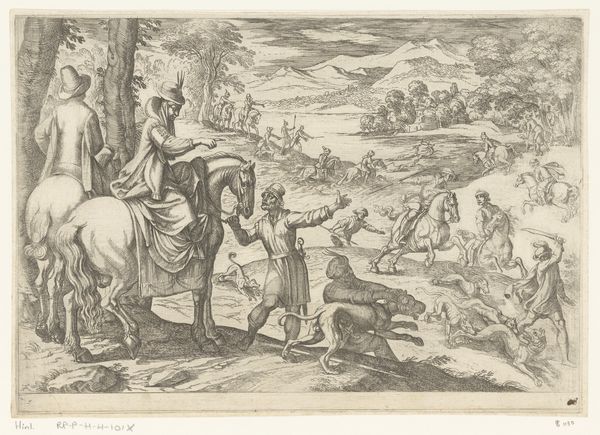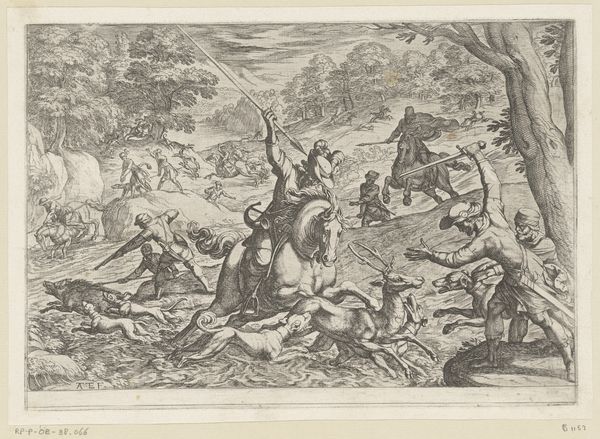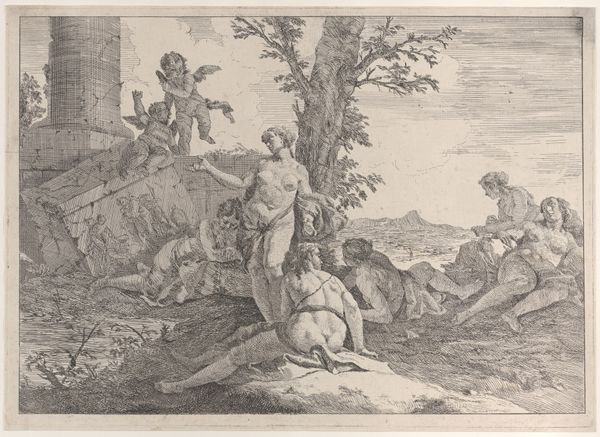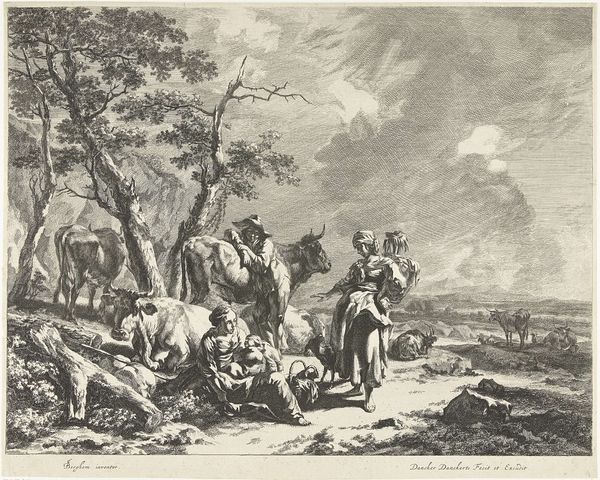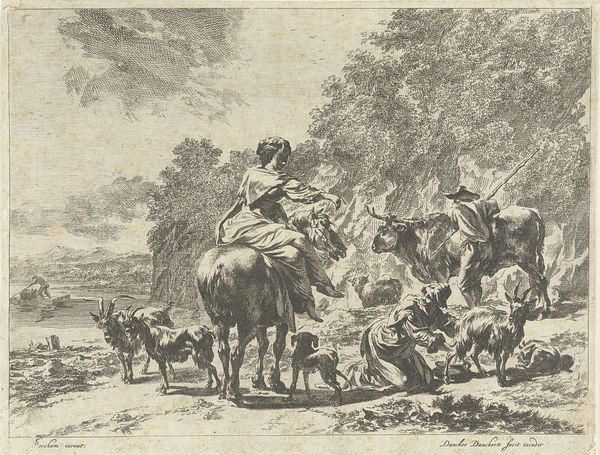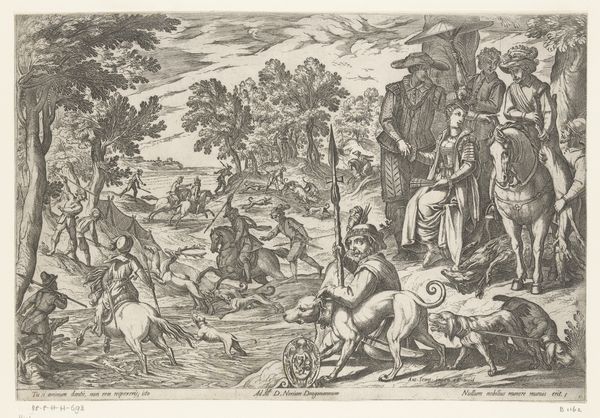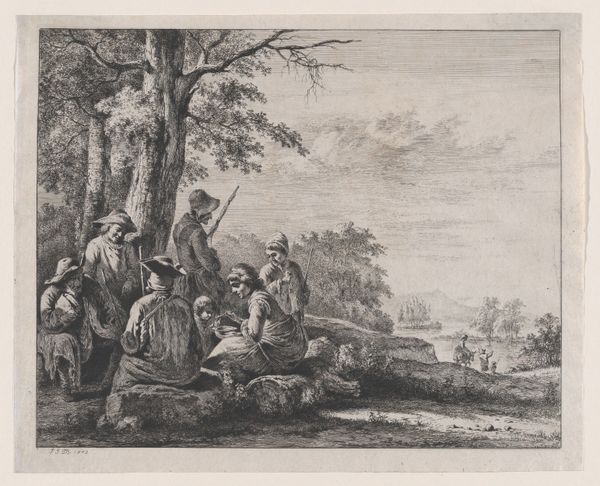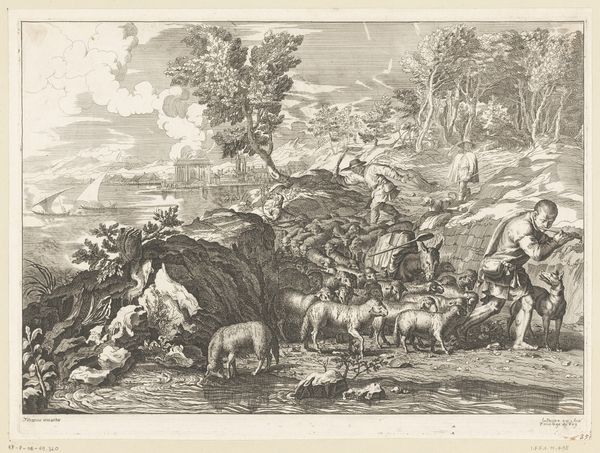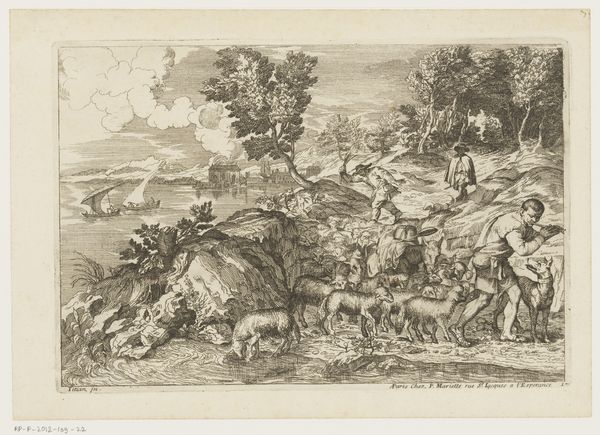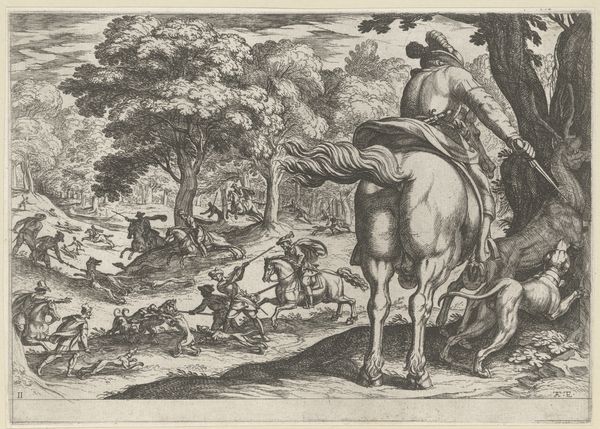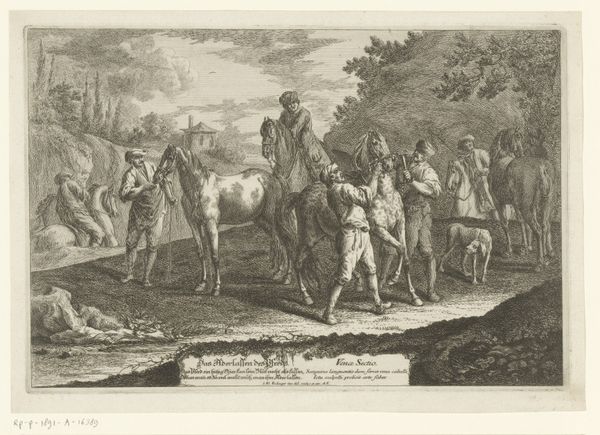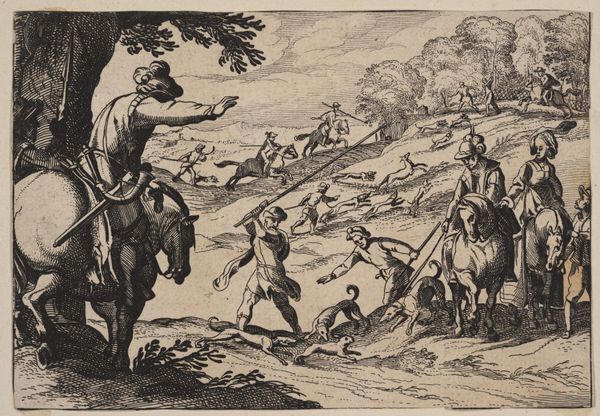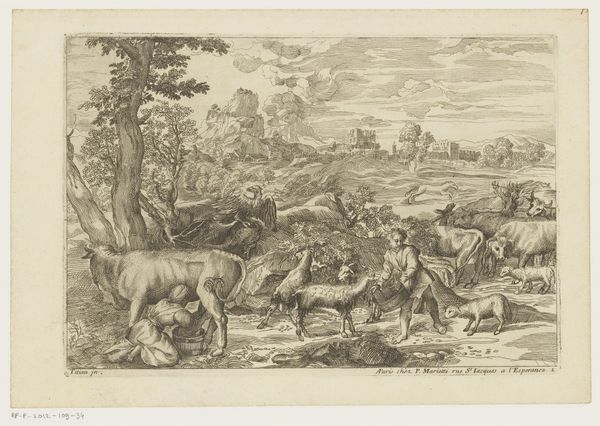
print, etching, engraving
#
narrative-art
#
baroque
# print
#
etching
#
landscape
#
figuration
#
genre-painting
#
engraving
#
realism
Dimensions: height 176 mm, width 244 mm
Copyright: Rijks Museum: Open Domain
Editor: This is "Schapenherders met ezels," or "Shepherds with Donkeys," a print made sometime between 1650 and 1750 by Madeleine Le Mersier. It's interesting how much detail she's achieved with simple etching and engraving. What first captures your eye in this work? Curator: I'm immediately drawn to the stark contrast between the heavily worked foreground and the almost vaporous background. Note how the density of lines creates areas of deep shadow and tangible texture in the figures and animals, whereas the distant mountains and trees dissolve into soft, atmospheric effects. The formal structure directs our gaze. Do you perceive this effect, too? Editor: I do, now that you point it out. It almost feels like two different scenes coexisting. I see what you mean about the figures feeling heavy. Is that strategic? Curator: Precisely. Le Mersier employs the varying densities of line not only to depict form and light but to establish a visual hierarchy. The solidity of the foreground contrasts dramatically with the ethereality of the background. It directs our attention and creates a clear focal point, emphasizing the narrative unfolding amongst the figures and animals. We must decode what formal purpose that is offering. Editor: So, the composition itself guides the viewer's interpretation. The foreground’s detail tells one story; the background whispers another. I appreciate how the technical aspects become so interwoven with the subject matter. Curator: Precisely, and this formal interrogation allows for a richer understanding of the artist's intent. One might consider the balance of these opposing elements and ask whether it serves to highlight, perhaps, the transient nature of life against a seemingly unchanging landscape.
Comments
No comments
Be the first to comment and join the conversation on the ultimate creative platform.
